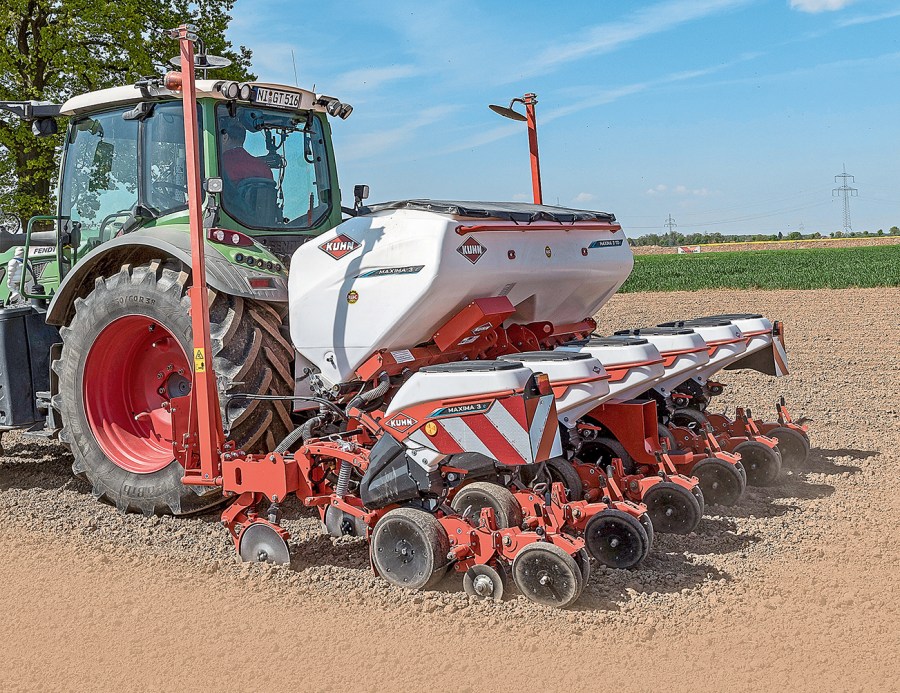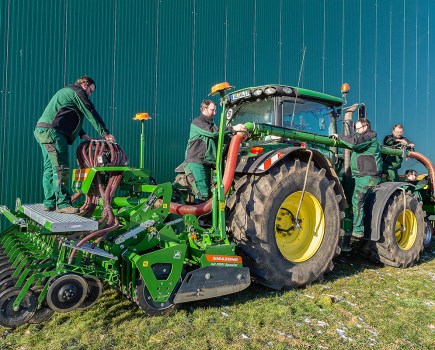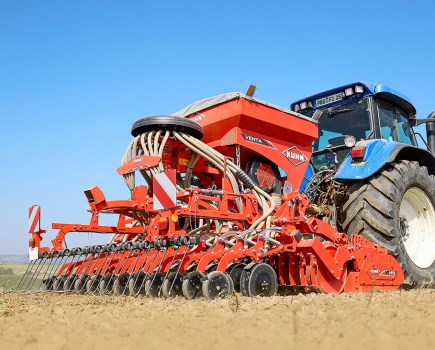DRIVING IMPRESSION: We’ve been using the six-row Maxima 3TDE to see how it performs over an extended period and discover whether it can really achieve consistent precision at speeds of up to 10km/hr. Read on to find out.
The Maxima precision planter family now comprises more than 10 variations — for a brief outline, refer to the box “Maxima diversity” on page 40. Our focus here is the six-row, 75cm spacing Maxima 3TDE — the latter denoting electric drive and a telescopic double frame to ensure it tucks within 3.0m for road transport. The seeder units are designed for speeds of up to 10km/hr, which gives a good indication of where Kuhn has positioned Maxima in the market.
The planter has a Cat III linkage headstock. When parked up, the Maxima rests on two parking stands that are secured by pins with inexpensive lynch clips. Tractor requirements include the pto shaft, four hydraulic pipes (depending on spec) and electric and ISObus
cables. When the Maxima is unhitched, the pto is stored in a holder that’s sadly in the way the moment the pto is connected up to the tractor. The hydraulic couplers are a tad too long, so they easily pop out of some tractors.
It takes one spool to slide the frame in/out and another for the bout markers (optional). The pto drives the fan to create pressure for transporting the fertiliser and vacuum for seed singling. It also powers the generator for the on-board 48V system.
The fertiliser hopper is available in four sizes from the factory: two 190-litre, two 290-litre, a 950-litre or a 1,350-litre. Our machine had the largest hopper and could hold 1,200kg.
We weren’t fans of the bulbous-shaped hopper because it empties faster at the sides than in the middle. This problem is made worse because two of the three outlets are on the outside, so the operator has to hop down and redistribute the fertiliser by hand several times during the day. And to really rub salt in the wound, the platform you stand on is not
as wide as the tank.
To make up, the standard fill level sensors are positioned on the outside of the tank, but they constantly reported the hopper was empty during our time using the drill. Kuhn says this is a supplier problem that should be solved ahead of the coming season.
The hopper is covered by a tarp sheet, which is held in place with an elastic cord. There is no rod to add stability, and, although it works as it is, the design could be better. The grids, on the other hand, are excellent.
For more up-to-date farming news click here and subscribe now to profi for more tractor tests for just £3.99 an issue. Check out the profi YouTube channel for more videos.






